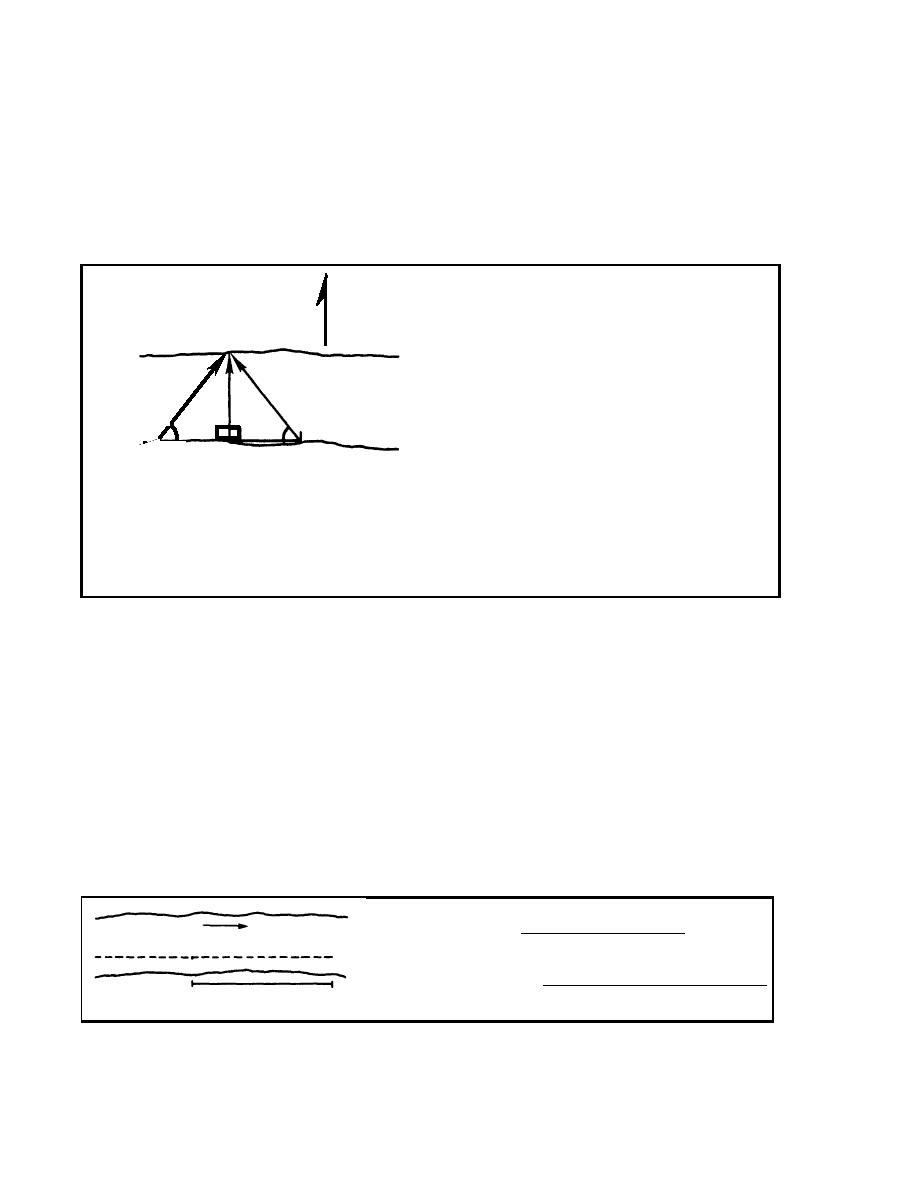
or rope tight. The length measured is the distance across the stream. This method is
particularly useful during darkness when lights are not allowed. Another method is
referred to as the left = add/right = subtract (LARS) method. The LARS method (also
referred to as the compass method) is especially useful when the gap to be measured is
wide. Use a compass to take the azimuth on the near shore, move left or right on a line
forming a 90ƒ angle with the azimuth. If you move to the left, add 45ƒ and measure the
distance from the start point to your current location. This distance is the same as the
distance across the gap (Figure 1-9).
A
= the point on the near shore
AB
= is the distance to be measured
N
Far shore
B
= the point on the far shore
B
C
= the point that corresponds to the 45 offset
D
= the point that corresponds to the 45 offset
315
45
C
D
A
Near shore
EXAMPLE:
If azimuth of line AB = 0 (moving left, add 45; moving right, subtract 45)
Azimuth of line CB = 45
Azimuth of line DB = 315
Difference between azimuth AB and azimuth CB = 45
Distance along AC or AD = distance along AB
Figure 1-9. Measuring the Stream Width With a Compass
c.
The velocity of a current varies in different parts of a stream. The current is
usually slower near the shore and swifter in the main channel. Perform the following steps
to determine the stream velocity (Figure 1-10):
Step 1. Measure a distance along the riverbank.
Step 2. Throw a light, floating object (not affected by wind) into the center of the stream.
Step 3. Record the time required for the object to travel the measured distance.
Step 4. Repeat this procedure at least three times.
Step 5. Use the average time of the test to compute the velocity (formula in Figure 1-10).
Step 6. Convert the stream velocity to other units of measurement as required.
measured distance (AB) (m)
Stream velocity (sec) =
float time (sec)
Direction of current
B
A
C
float time 1 + float time 2 + float time 3
Reported stream velocity =
3
B
A
Figure 1-10. Determining the Stream Velocity
EN 5622
1-8


 Previous Page
Previous Page
